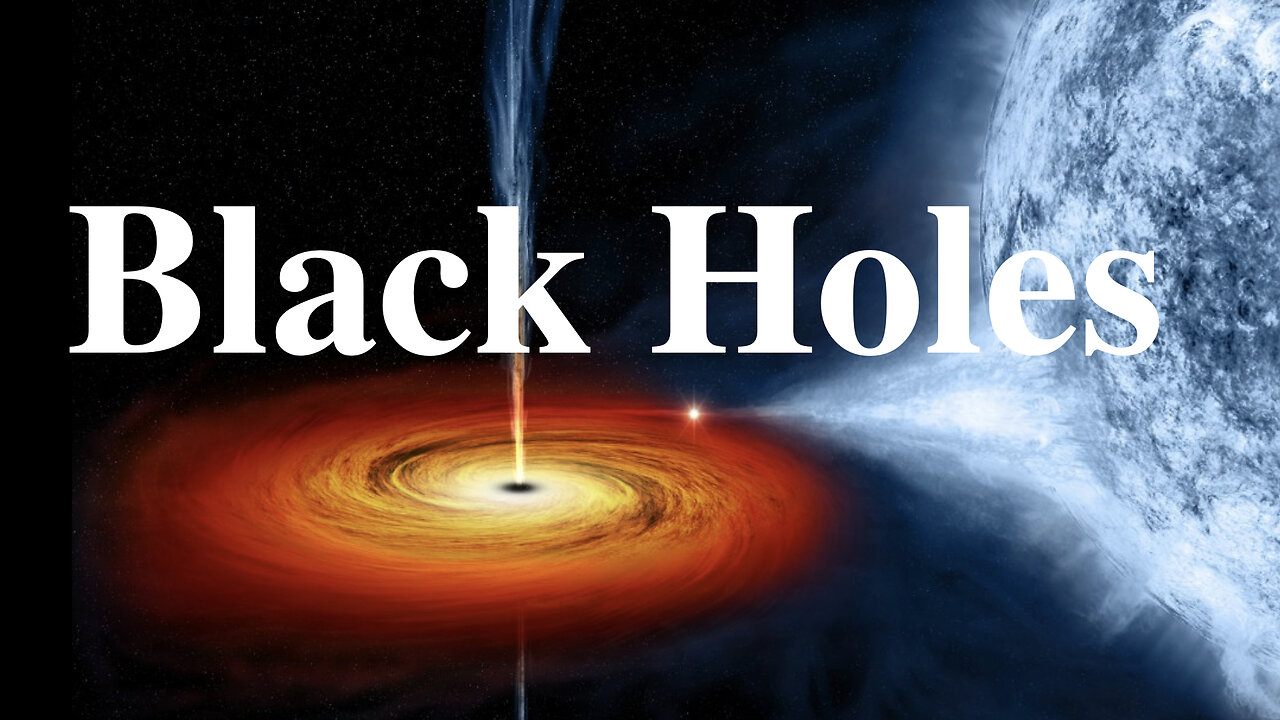Premium Only Content

Explore the Mysterious World of Black Holes: Nature’s Most Enigmatic Cosmic Phenomena!
The exploration of black holes represents one of the most profound challenges in contemporary astrophysics, engaging scholars and enthusiasts alike in the intricate dance of gravity and spacetime. Black holes, defined as regions of spacetime exhibiting gravitational acceleration so strong that nothing, not even light, can escape from them, are the product of the complex interplay between mass and the fabric of the universe. This discussion will elucidate the foundational principles surrounding black holes, tracing their theoretical inception through the contributions of key scientific figures, culminating in our current understanding of these enigmatic entities.
The conceptualization of black holes can be traced back to the late 18th century, when John Mitchell, an English scientist and clergyman, first proposed the notion of ‘dark stars’ in 1783. Building upon Newton’s corpuscular theory of light, Mitchell posited that if light comprises particles, then it must possess sufficient energy to escape a gravitational field. He asserted that should an object possess a mass and density similar to that of the sun but expanded to 500 times its current size, the escape velocity would exceed the speed of light, thereby preventing any emitted light from escaping its gravitational pull. This revolutionary idea laid the groundwork for the mathematical exploration of gravitational singularities.
The theoretical underpinnings of black holes were further advanced by Pierre-Simon Laplace, who, in 1796, established mathematical proofs indicating the existence of stars with gravitational fields strong enough to trap light. However, it was not until the advent of general relativity, articulated by Albert Einstein in 1915, that the modern understanding of black holes began to take shape. Karl Schwarzschild provided the first solution to Einstein’s field equations, yielding the Schwarzschild solution, which describes the spacetime surrounding a spherically symmetric, non-rotating mass. This solution demonstrated that the curvature of spacetime is directly related to the mass and energy contained within it, thereby establishing a mathematical framework for understanding gravitational phenomena.
The discourse surrounding black holes evolved significantly in the 20th century, particularly following the work of J. Robert Oppenheimer and his student Hartland Snyder in 1939. They elucidated the fate of massive stars that exhaust nuclear fusion, positing that once the neutron degeneracy pressure is overcome, such stars would collapse into a singularity, creating a black hole. This marked a pivotal moment in astrophysics, transitioning from theoretical speculation to the recognition of black holes as actual astronomical entities.
To further comprehend black holes, it is essential to delineate their various forms, primarily stellar and supermassive black holes. Stellar black holes, typically formed from the remnants of massive stars post-supernova, possess masses ranging from three to several tens of solar masses. In contrast, supermassive black holes, which reside at the centers of galaxies, can reach millions to billions of solar masses, with our Milky Way hosting one approximately four million times the mass of the sun.
The singularity at the core of a black hole is accompanied by an event horizon, a boundary beyond which information cannot escape to the outside universe. The event horizon is not a physical surface but rather a mathematical construct, indicating the point at which the escape velocity equals the speed of light. Within this boundary, the laws of physics as we understand them cease to apply, leading to phenomena such as gravitational time dilation and redshift.
As an object approaches a black hole, it experiences extreme tidal forces, often described by the term ‘spaghettification.’ This process results in the elongation and compression of matter due to differential gravitational forces, ultimately leading to its disintegration before crossing the event horizon. Observational evidence for black holes primarily arises from their gravitational influence on nearby stars and gas clouds, as well as the detection of X-ray emissions from accretion disks formed by matter spiraling into the black hole.
The study of black holes has been enriched by advancements in observational technology, allowing astronomers to detect and analyze the effects of these cosmic phenomena indirectly. Instruments such as the Event Horizon Telescope have enabled the first visual evidence of a black hole’s shadow, specifically in the galaxy M87, providing a remarkable affirmation of theoretical predictions. Additionally, the detection of gravitational waves from colliding black holes has opened a new avenue for understanding their properties and the dynamics of their interactions.
In conclusion, black holes epitomize the confluence of theoretical physics and observational astronomy, offering profound insights into the nature of gravity, spacetime, and the fundamental structure of the universe. As research continues to evolve, our comprehension of these astronomical enigmas will undoubtedly deepen, inviting further inquiry into the cosmic mechanisms that govern our existence.
-
 2:06:23
2:06:23
Inverted World Live
7 hours agoEpstein Worked for CIA According to OMG Reporting | Ep. 114
127K37 -
 3:14:39
3:14:39
TimcastIRL
8 hours agoTrump DOJ Indicts James Comey, The ARRESTS Have BEGUN | Timcast IRL
316K361 -
 7:54:14
7:54:14
SpartakusLIVE
9 hours ago#1 Hulking MASS squashes NOOBS for viewers’ DELIGHT
69.8K2 -
 1:32:21
1:32:21
The Charlie Kirk Show
8 hours agoTHOUGHTCRIME Ep. 98 — The Comey Indictment? Antifa Agenda? Charlie and the Cubs?
122K57 -
 1:04:56
1:04:56
Sarah Westall
8 hours agoPolitical Assassinations, Targeted Hit Lists - Manufactured Chaos w/ Harley Schlanger
77K12 -
 1:11:31
1:11:31
Flyover Conservatives
14 hours agoThe “J Walker” Secret: One Daily Habit That Shifts an Entire City - Tammy Hotsenpiller | FOC Show
66.9K4 -
 2:12:02
2:12:02
Mally_Mouse
11 hours ago🎮Throwback Thursday! Let's Play: Wii Sports Resort!
54.7K2 -
 5:43:34
5:43:34
Akademiks
7 hours agoATLANTA IS BACK. Young Thug and YFN best buddies now. ATL backs Thug officially!
70.9K2 -
 5:40:35
5:40:35
Reolock
9 hours agoWoW Classic Hardcore | 3 LEVELS REMAIN
52K3 -
 3:00:23
3:00:23
Sgt Wilky Plays
8 hours agoThirst Trap Thursday | Regiment Donor Drive
41.1K